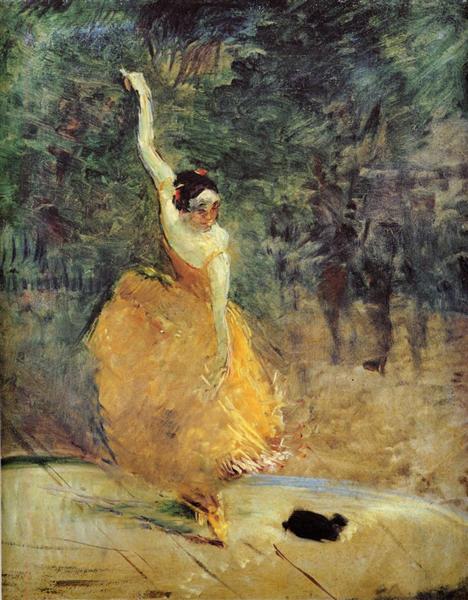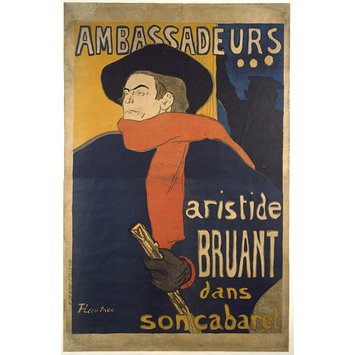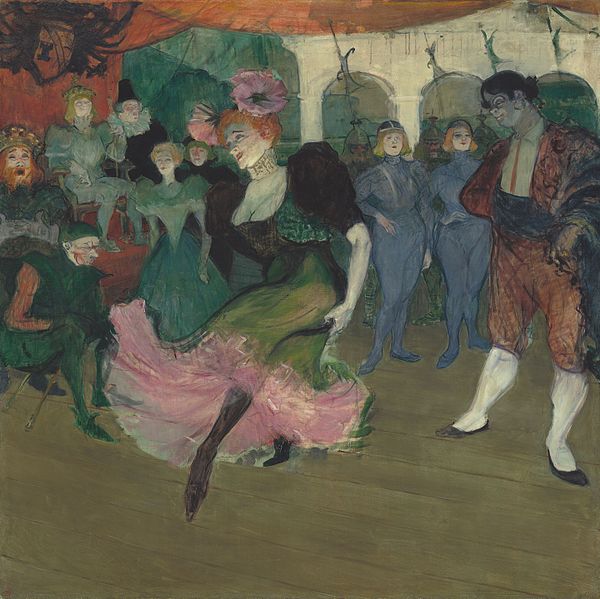November 24th is the date of birth of Henri de Toulouse-Lautrec, a French Painter. He was born in 1864, in Albi, France. Toulouse-Lautrec is well-known for his painting of Parisian nightlife and entertainment in the 1890s.
One of his works is Marcelle Lender Dancing the Bolero in Chilpéric. Toulouse-Lautrec used expressive lines, simple outlines, and large color areas to create movement effects. The Marcelle Lender was a French Music hall entertainer.
Toulouse-Lautrec began to portray the bohemian-life of Montmartre in the mid-1880s. He was depicting several popular singers, dancers, and entertainers, such as Aristide Bruant, Jane Avril, and Loie Fuller.

Another work is The Spanish Dancer. To capture dancer’s motion, Toulouse-Lautrec draws the figure in the free-flowing lines, intense color, and not in the traditional three-dimensional perspective. All of these techniques place the figure in an active rhythm.

Toulouse-Lautrec also produced many posters, most of them were the publication of night performances in Paris. His poster was painted in solid color and brave lines. This poster publicized Aristide Bruant’s performance at the Ambassadeurs nightclub in Paris, 1892. Bruant was a satirical singer and Toulouse-Lautrec’s friend.
Toulouse-Lautrec’s artworks are fascinating, especially in how he transforms motion into a two-dimensional canvas without losing its life and energy. His abstraction and perspectives inspire the next school of painting, like Fauvism and Cubism.

